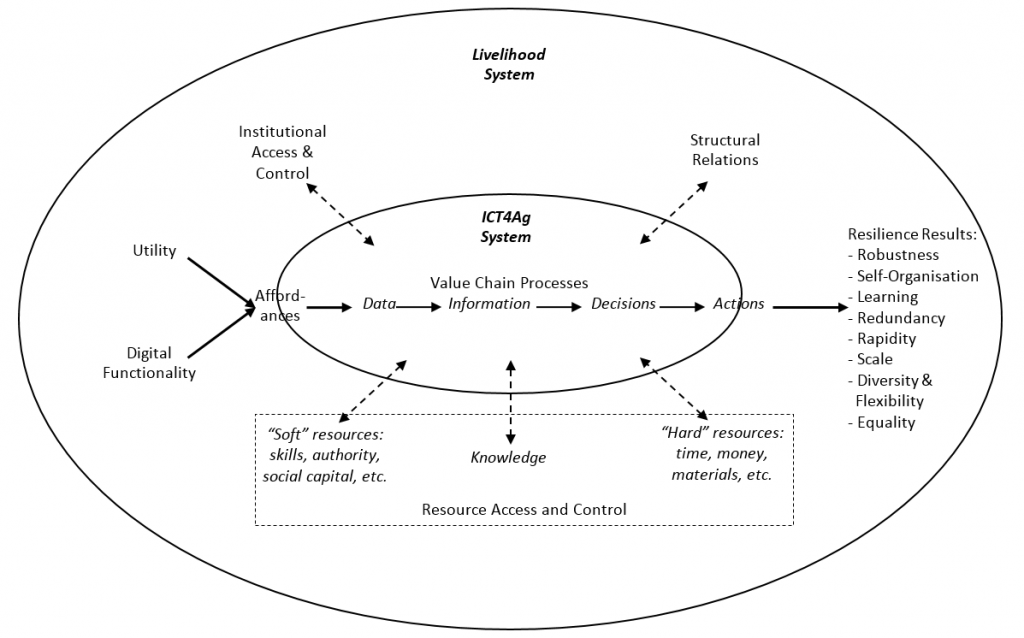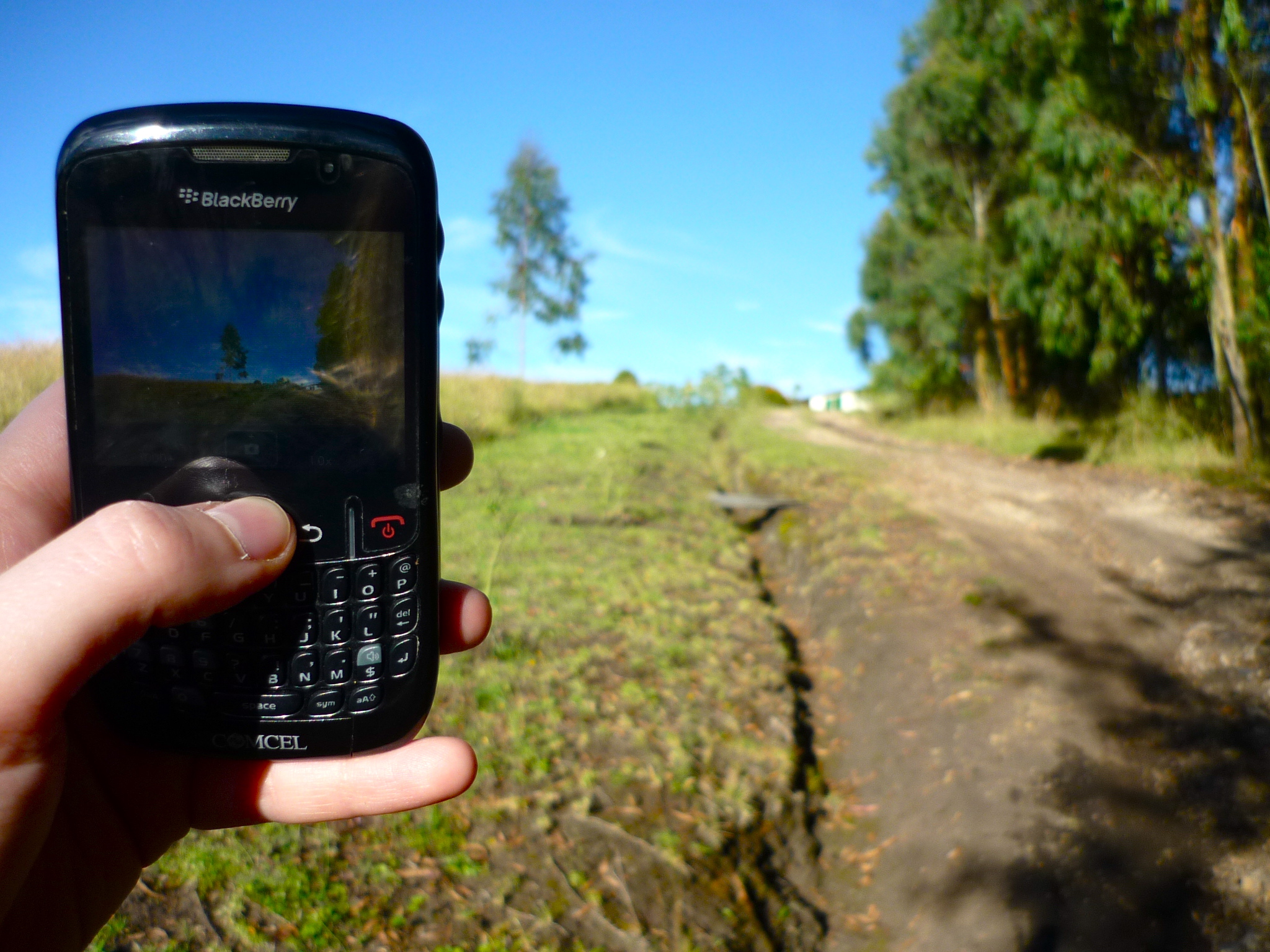What impact do ICT-in-agriculture projects have on rural resilience?
To cope with short-term shocks (e.g. conflict, economic crisis) and long-term trends (e.g. climate change), rural areas in developing countries must become more resilient. Yet we currently know very little about the impact that information and communication technologies (ICTs) can have on resilience-building.
To address this knowledge gap, we undertook a systematic literature review of 45 ICT4Ag cases from Africa and Asia. We sought to understand both what the resilience impact of ICTs is, and why.
Measuring resilience using the RABIT (Resilience Assessment Benchmarking and Impact Toolkit) framework, current reported evidence suggests ICTs are strengthening rural resilience far more than weakening it. But the impact is highly uneven. Household resilience is built far more than community resilience, and there is a strong differential impact across different resilience attributes: equality in particular is reported as being undermined almost as much as enhanced.
In order to explain these outcomes, we developed a new conceptual model (as shown below) of the relationship between ICTs and resilience. It highlights the importance of individual user motivations, complementary resources required to make ICT4Ag systems support resilience, and the role of wider systemic factors such as institutions and structural relations.

We make a series of recommendations for resilience policy and practice:
- More equal focus on both household- and community-level resilience.
- More attention to the resilience-weakening potential of ICTs.
- Ensuring perceived utility of digital applications among rural users.
- Encouraging use of more complex ICT4Ag systems.
- Looking beyond the technology to make parallel, complementary changes in resource provision and development of rural institutions and social structures.
We also draw conclusions about the conceptualisation of resilience: the need for better incorporation of agency and power, and greater clarity on resilience system boundaries and indicators. Overall, for those seeking to strengthen rural resilience through use of ICTs, the paper – “Impact of ICTs-in-Agriculture on Rural Resilience in Developing Countries” – offers new frameworks, new evidence, new practical guidance and a research agenda.
 Determining the repercussions of the changing climate is a field of great unknowns. While the impacts of climatic variations and seasonal changes on the most vulnerable populations are expected to increase and be manifest in more vulnerable ecosystems and natural habitats, the exact magnitude and impact of climate change effects remain, for the most part, open questions.
Determining the repercussions of the changing climate is a field of great unknowns. While the impacts of climatic variations and seasonal changes on the most vulnerable populations are expected to increase and be manifest in more vulnerable ecosystems and natural habitats, the exact magnitude and impact of climate change effects remain, for the most part, open questions.